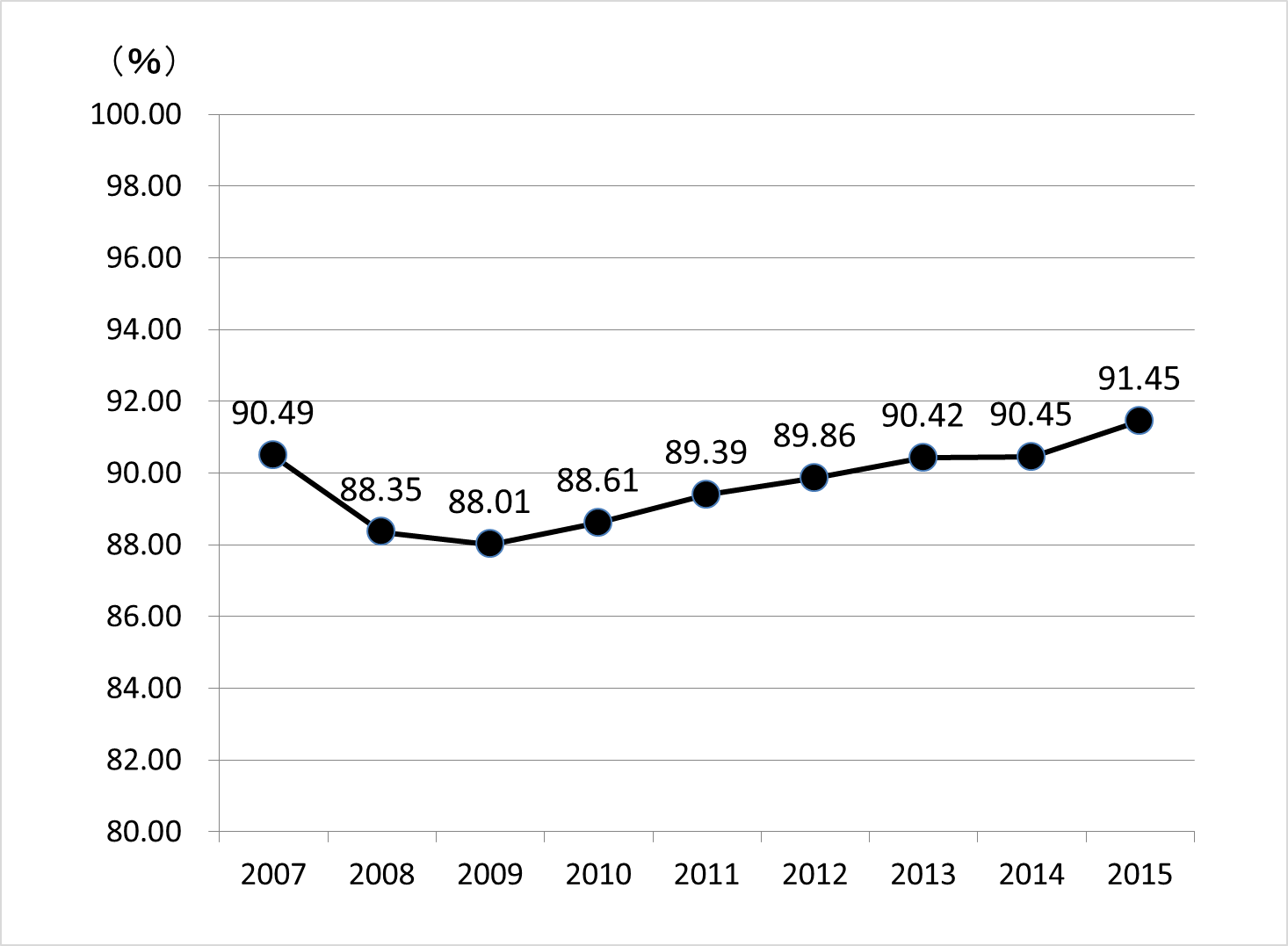Column Finance and the Social Security System 2018.02.09
【Aging, safety net and fiscal crisis in Japan】No.31: People who do not pay premiums for Universal Medical Insurance
A universal insurance system that provides healthcare security to all citizens is currently in place in Japan. This insurance is broadly classified into three types: workplace insurance, insurance for the elderly (aged 75 or older), and national health insurance for people who are 74 years old or younger who are not covered by workplace insurance. The fact that there are many people who do not pay insurance premiums has become a significant political issue.
The number of subscribers to National Health Insurance was 31.82 million in 2015. Figure 1 shows the percentage of subscribers paying a predetermined insurance premium. The percentage of 91.45% in 2015 indicates that 8.55% of subscribers were not paying insurance premiums. We ask this question: What type of procedures are followed to deal with subscribers who do not pay insurance premiums in the medical insurance system?
First, the municipalities that oversee the insurance procedure should instruct non-payers to pay. Second, for those who still do not pay their premiums immediately, a short-term insurance card should be issued by the municipality. This should be a health insurance card with a validity period of a number of months. During fees negotiation between the municipality and the subscriber, discount measures appropriate to the subscriber's premium burden ability can also be discussed. Even though it is clear that there are people in Japan who cannot afford to pay their premiums, there are those who do not pay insurance premiums, but own property. In such a case, the municipality will confiscate the short-term insurance card and issue a credential card. The credential card holder must then pay medical fees in full. Additionally, he or she cannot receive insurance benefits unless previously outstanding insurance premiums are paid.
Figure 2 shows the number of households that do not pay their insurance premiums, the number of households in possession of short-term insurance cards, and the number of households in possession of credential cards. These numbers are decreasing, largely due to stricter premium collection efforts by municipalities against the backdrop of the financial deterioration of the insurance system. To conclude, as long as there are this many subscribers who do not pay their premiums, the universal insurance system cannot work.

(Source)Ministry of Health, Labor and Welfare

